
Ahead of the latest USDA crop progress report, out Monday afternoon, analysts had expected the agency to hold steady its corn and soybean crop quality ratings, which last week were 57% and 54% in good-to-excellent condition. But those expectations weren’t exactly met.
USDA had corn condition move a point higher, with 58% of the crop now in good-to-excellent condition for the week ending July 28. Another 30% of the crop is rated fair (unchanged from a week ago) and the remaining 12% rated poor or very poor (down a point from a week ago).
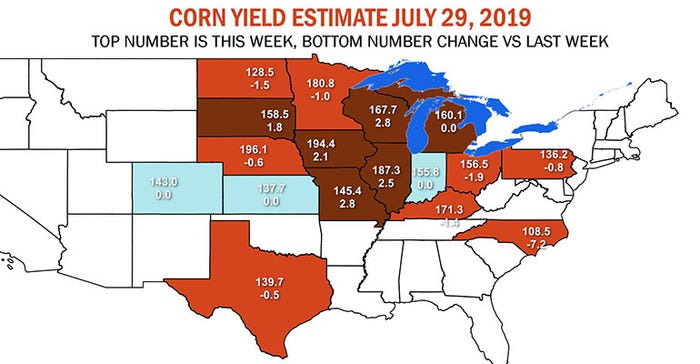
Individually, some states are still struggling – most notably Ohio (34%), Missouri (34%) and Indiana (36%). But some high-performing states that include Colorado (80%), Pennsylvania (80%) and Nebraska (75%) helped to balance out the national average.
“Corn ratings showed better than expected improvement last week adding a bushel per acre to yield potential based on our models using USDA’s weekly condition reports,” according to Farm Futures senior grain market analyst Bryce Knorr. “While corn was steady or deteriorated on most of the Plains and eastern Midwest, strong gains along four of the five states bordering the Mississippi River more than offset losses.”
Farm Futures modeling points to yields of 169.5 to 171.6 bushels per acre nationwide, higher than any of our other ways of assessing crops, including weather and vegetation maps, Knorr adds.
“We’ll have updates of those projections later in the week, along with results from our Farm Futures survey Aug. 5,” he says.
Physiologically, 58% of the U.S. corn crop is now silking, which is much improved from the prior week’s tally of 35% but far behind 2018’s pace of 90% and the five-year average of 83%. And 13% of the crop has now reached dough stage, versus 2018’s pace of 35% and the five-year average of 23%.
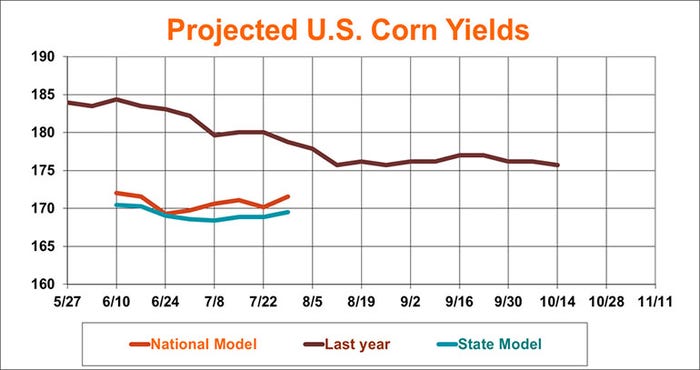
For soybeans, the overall percentage of the crop in good-to-excellent condition held steady at 54%, although the breakdown moved from 46/8 last week to 45/9. Another 33% of the crop is rated fair (down a point from last week), with the remaining 13% rated poor or very poor (up a point from last week).
“Soybean yield estimates were little changed this week,” Knorr says. “State-by-state ratings eased slightly, while nationwide held steady overall. These estimates put yields at 49.5 to 50.4 bpa.”
Physiologically, more than half (57%) of the crop is now blooming, up from 40% a week ago. That’s still significantly behind 2018’s pace of 85% and the five-year average of 79%, however. And 21% of the crop is setting pods, versus 7% a week ago. Not surprisingly, that’s also well behind 2018’s pace (58%) and the five-year average (45%).
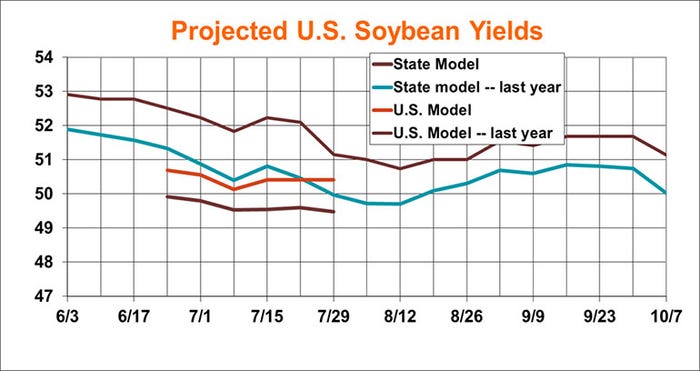
Spring wheat crop condition took a noticeable step lower, from 76% rated good-to-excellent a week ago down to 73%. Another 21% of the crop is rated fair (up a point from last week), with the remaining 6% rated poor or very poor (up two points from last week).
“Spring wheat showed the biggest change this week, losing nearly a bushel per acre after the annual tour in North Dakota said yields were lower than a year ago,” Knorr says. “Still, projections made from the condition reports remain much larger than those found by the tour.”
Ninety-seven percent of this year’s spring wheat crop is now headed, up from 92% a week ago and a bit behind 2018’s pace of 99% and the five-year average of 98%.
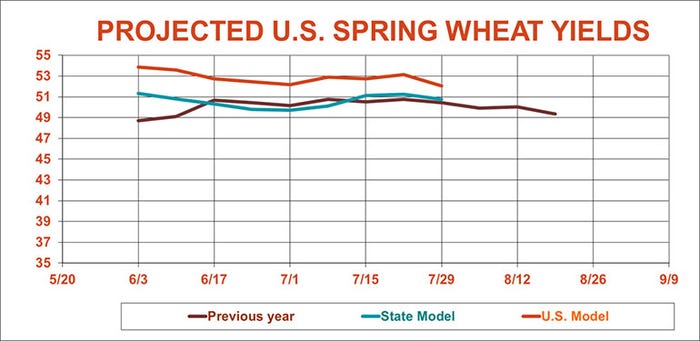
Winter wheat harvest is rolling along, although not quite as quickly as analysts had anticipated. Harvest progress has reached 75% across the top 18 production states, up from 69% a week ago. Last year’s pace was 84%, with a five-year average of 86% by the end of July.
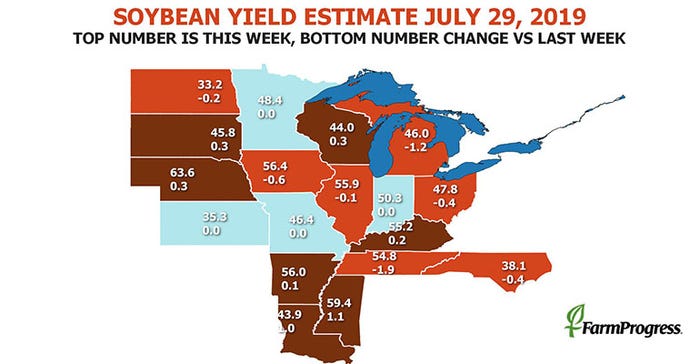
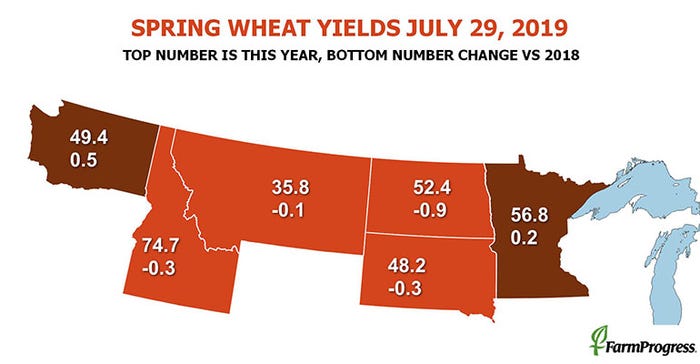
About the Author(s)
You May Also Like






